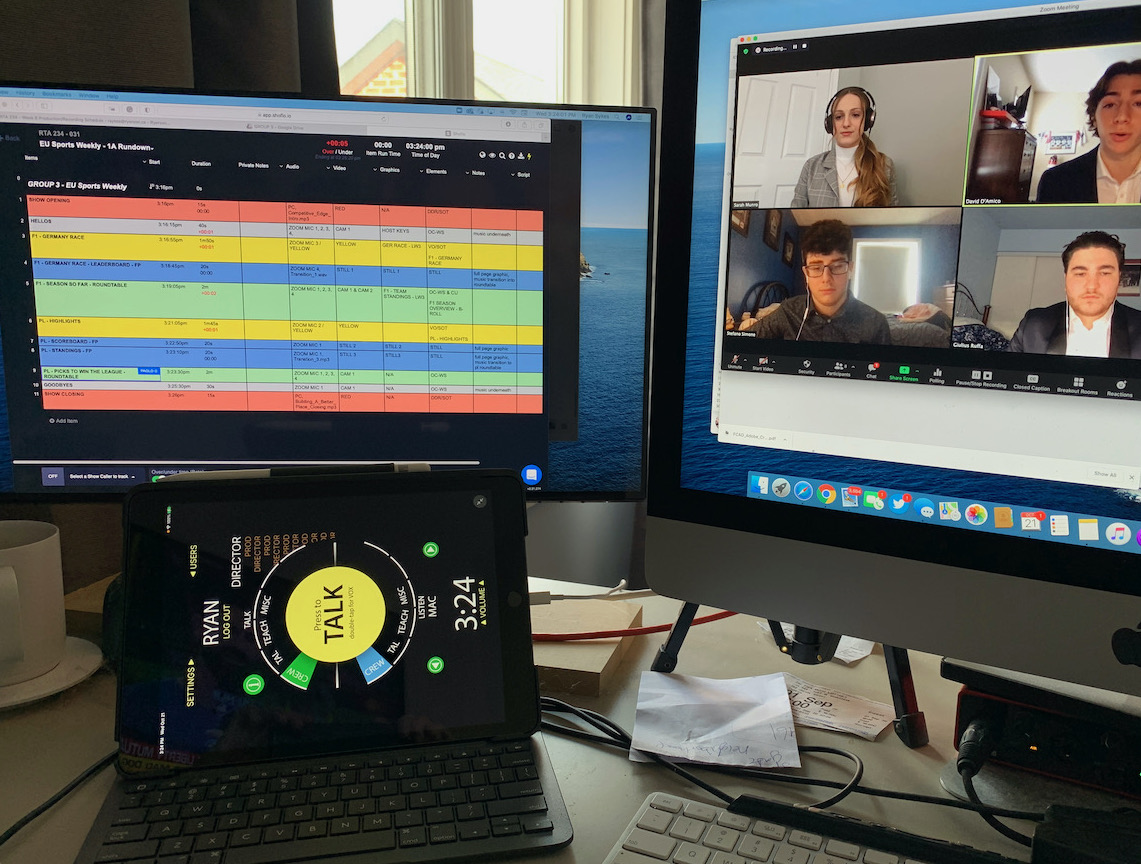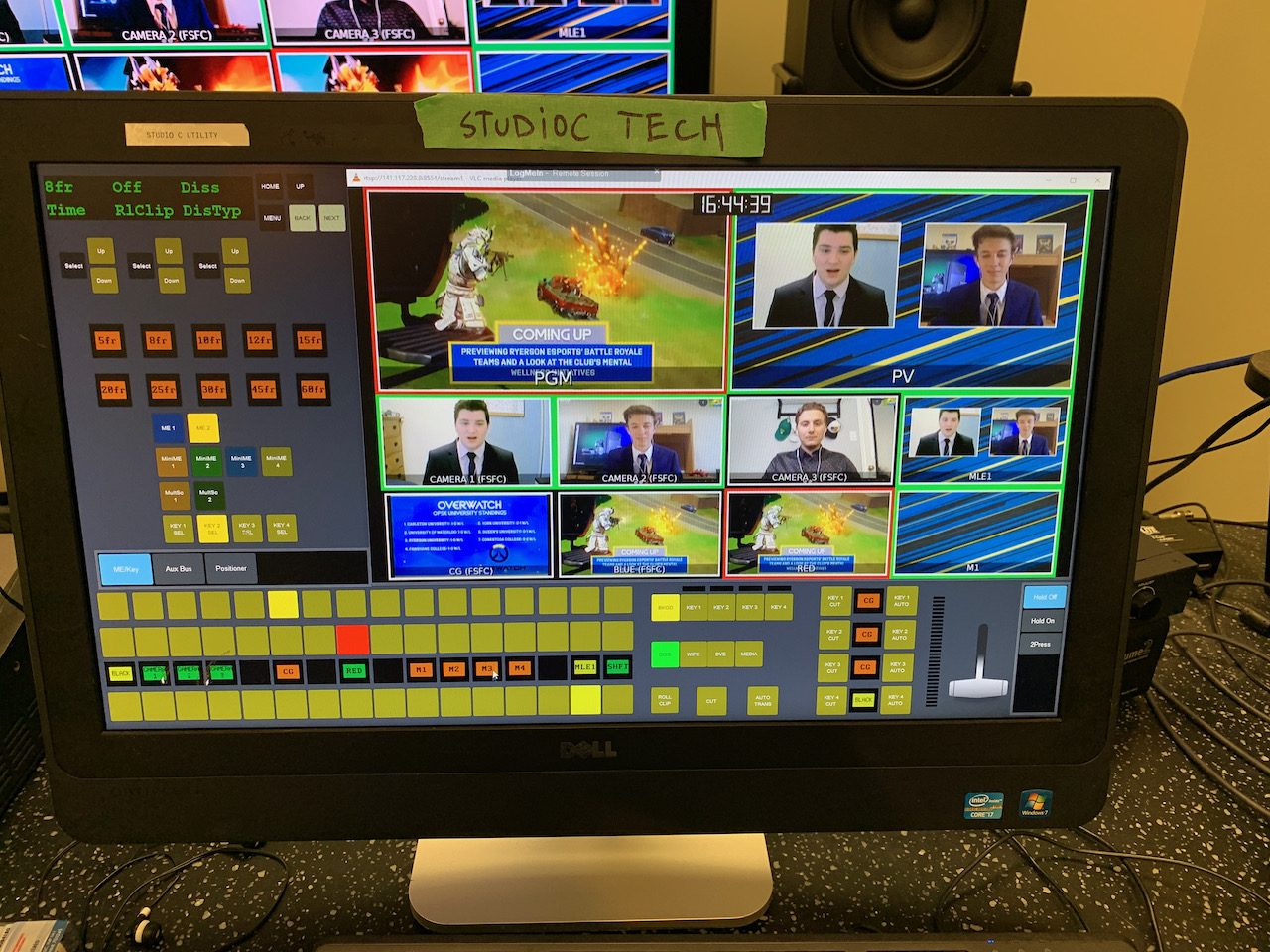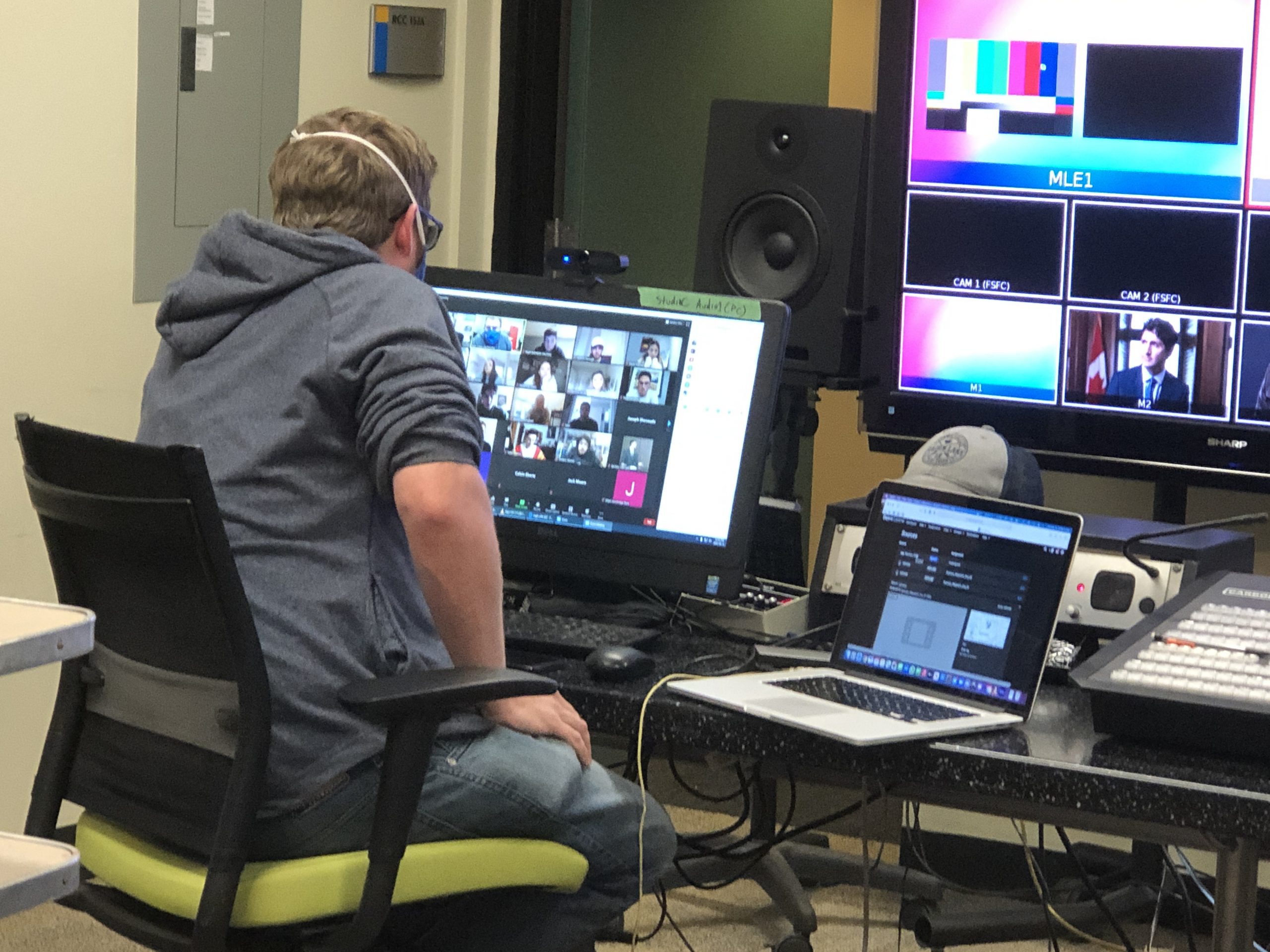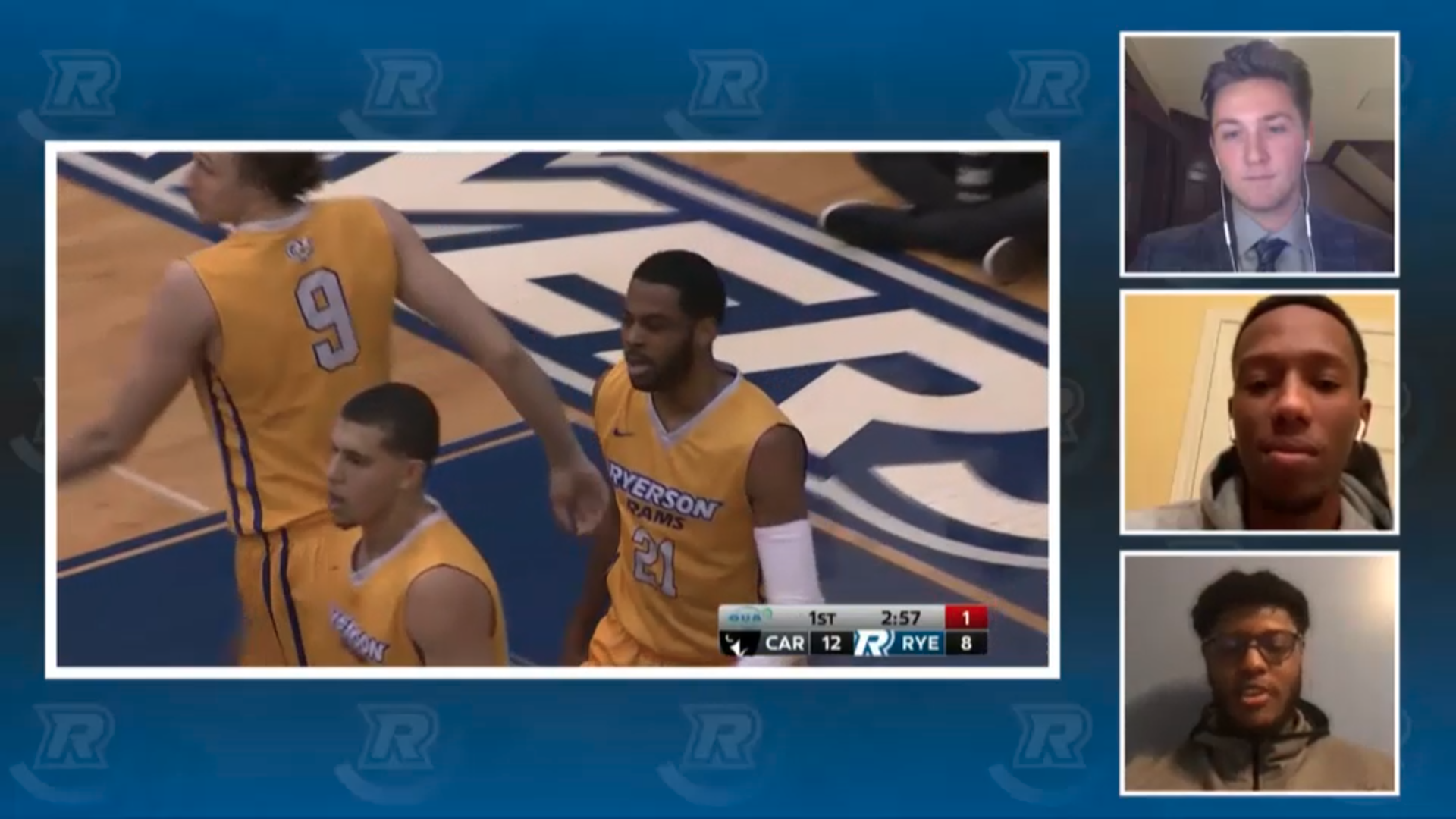Remote Production Keeps Ryerson University Content Flowing During Shutdown of Collegiate Athletics
The educational curriculum is still serving students local and international
Story Highlights
Canada is still dealing with a nationwide shutdown in response to the global pandemic, and Ryerson University, in downtown Toronto, has transitioned to a full remote-production model to continue the generation of content and the education of its students around the world.
“The unique thing is that we’re not doing anything virtually,” says Joe Scrozzo, media systems team lead and broadcast engineer, Ryerson University. “We’re physically controlling the hardware in our control room.”
Away From Home: New Infrastructure for RTA School of Media
After the start of the pandemic last March, Scrozzo’s team, including Broadcast IT Technician Grace Hu, met with Production and Programming Lead Brian Withers and the staff at RTA School of Media, the university’s notable radio and television program, to devise a plan to continue the education of students off-campus. In the past, the community school has always provided in-person instruction and the ability to learn the art of television production with actual equipment at students’ disposal. With students and faculty sequestered in their respective homes, the two entities developed a system that would link everyone together.
“We started in June and worked through a bunch of different tests to see what software worked the best,” says Scrozzo. “We didn’t know what was going to happen in September 2020, so Brian came up with a few ideas. At one point, we came together to mesh our two ideas.”
The two ideas turned into an infrastructure that can be accessed from all corners of the globe. Control-room technology features Ross Video’s Acuity production switcher, XPression graphics, and NK Series routing system, which students are able to use via the web-based platform.
“The different pieces of equipment all have software panels that allow the students to control them, so they still get all of the benefits of a 3M/E switcher, a 32-channel audio mixer, and the full capabilities of a playback record server,” Scrozzo adds. “We’re taking the output of our switcher, streaming it, and embedding different audio channels so that the audio operator can hear what they need to hear.”
From an outsider’s perspective, this seems a total no-brainer to fulfill the course curriculum without any interruptions. From a technological standpoint, it’s a lot trickier when you’re connecting local students, others elsewhere in Canada, and students in Russia, Malaysia, and different parts of the U.S.
“Initially,” says Scrozzo, “I was concerned with latency and how we get the student who’s an hour outside of Toronto to sync with someone who’s in Dubai or Asia. We made adjustments in our setup to reduce it as much as possible, but we were also aware that some latency was inevitable when dealing with remote sources and operators.”
Educational Tool: Students Adapt to Remote Learning
At Ryerson, education in television production starts at its foundation. Normally, first-year students would learn the basics in a traditional setting, but now, their first foray into the medium is in a virtualized setting. Returning students, for their part, have learned the traditional techniques and methods in previous semesters. Withers, then, is tasked with the delicate balancing of guiding the first-year students while easing returning students’ transition into this new frame of thinking.
“Upper-class students can lean on their pre-pandemic experience because these are the remote versions of the tools [they’ve learned with],” he explains. “When we do get back to campus, I think it’ll be cool to see the first-year students, who have never touched any of this [physical] equipment, seamlessly transition into an in-person environment.”
Getting accustomed to the technology was one thing, but bringing everyone online into unison was something entirely different. Ryerson’s global reach provided obstacles in terms of video and audio delays, but coursework based on Eastern Time was hard for those operating in a different time zone.
“I really feel for the students who are in Dubai and Malaysia, because that’s a 12- to 13-hour time difference,” Withers adds. “Courses run from noon to 6:00 p.m. ET, so they’re working from midnight until 6:00 in the morning, but they want to learn and be a part of the team.”
Despite the time-sensitive and tech-based struggles, this model is a true game-changer. Around the world, remote learning may be integrated into the curriculum when things get back to normal. This style of teaching may attract more students to the university. In 2021, it can be used as a tool for those studying for upcoming exams or needing extra reps outside of the classroom.
“When we get out of the pandemic,” says Scrozzo, “the remote system will open up a bunch of teaching opportunities. If a student is doing a workshop on a switcher and needs extra time to learn it for their test two weeks down the road, they don’t have to learn it in person. It can be done remotely.”
Back on Campus: Onsite Technician Troubleshoots Three Control Rooms
Since the end of 2020, the production workflow has been turned into a science at Ryerson. The system was once confined to a single control room but now has spread to two others, for a total of three separate control rooms online. With the additional spaces, students will be able to experience every position.
“We needed to mimic the in-person classroom, so the students have to rotate through the different roles,” says Withers. “For the third-year course, all three of the studios would [normally] run simultaneously. Now, in this winter semester, our first-year, multi-camera course has two of our studios running simultaneously.”
With many staffers remaining at home, a lone onsite technician is inside the facility to correct and troubleshoot anything that’s needed for the at-home students. It’s a sign of how far the project has come and how comfortable the students are with this new technology.
“The moment that was most eye-opening was when we got feedback from the students,” says Scrozzo. “It takes a little while to get used to it, but, 15 minutes into the production, they almost forgot that they were sitting at home. It set off a light in our heads where we thought that this could be possible and it could work quite well.”
Continuity of Content: Rams Rewind Takes a Spin on 2019-20 Library
Ryerson University is a member of Ontario University Athletics (OUA), which is under the umbrella of U Sports, the national sports-governing body of Canada. Since OUA sports are still on hiatus, students aren’t able to flex their creative muscles in a live setting. Manager, Production and Facilities, Lesley Salvadori; Production Technician/Sessional Instructor Ryan Sykes; Instructor, Production Training and Support, Scott O’Sullivan; Staffer, Production Training and Support, Evan Rolfe; and Withers have curated a program that replaces the live-event aspect and produces other forms of content.
“We’ve done a lot of talk-show–based and highlight-based content,” says Withers. “We’ve had a few groups engage in esports content to get experience with the core components of multi-camera live production and mitigating latency.”
For these productions, the crew is deploying Unity intercom for communications, Quicklink TX through Skype for video feeds, and Dejero for connectivity. All these sources are aggregated into a 10-box multiviewer, which is populated through VLC and mirrored onto Zoom. Students are able to see each other and these program feeds through Zoom in rea time. Since this content isn’t in a live format and is for educational purposes, the instructors are giving the crew some leeway on minor hiccups.
“If we’re doing live, high-end sports.,” says Scrozzo,” we couldn’t get away with cutting to a shot three seconds late. Brian has structured the coursework and the content to have the tolerances be a bit looser.”
One of the more noticeable examples of the content produced is Ryerson’s use of its video archive. Based on game footage from the 2019-20 season, the material is provided to OUA.tv, the digital destination for conference fans. The Rams Rewind show brings in former and current players to provide commentary.
“Our Athletics Department picked monumental games in Ryerson Rams history for each of our different programs, so we’re using our at-home production to allow former coaches and players to join,” says Withers. “It’s a hybrid talk show where we get to hear firsthand experience about being on that team, but we also get to know a little bit more about what they’re up to now.”
Versatility, Quick Thinking: Remote Productions Set Students Up for Success
Over the past year, the sports-video–production industry has seen a heightened acceleration of remote production. As the community continues down this path, deployment of offsite resources on both minor and high-profile events will become more prevalent. Students are asked to be proficient in these workflows upon graduation. For students at Ryerson University, the silver lining of the pandemic is the chance to learn these skills, master them, and become a more well-rounded production professional when it’s time to hit the real world.
“It’s similar to the experience of a freelancer: sometimes you go to one facility, and things are a certain way, but, when you go to a different facility a few weeks later, it’s not exactly the same tools or system,” Withers explains. “Versatility is being developed, and that’s one of the big takeaways that they’ll be able to show future employers.”




